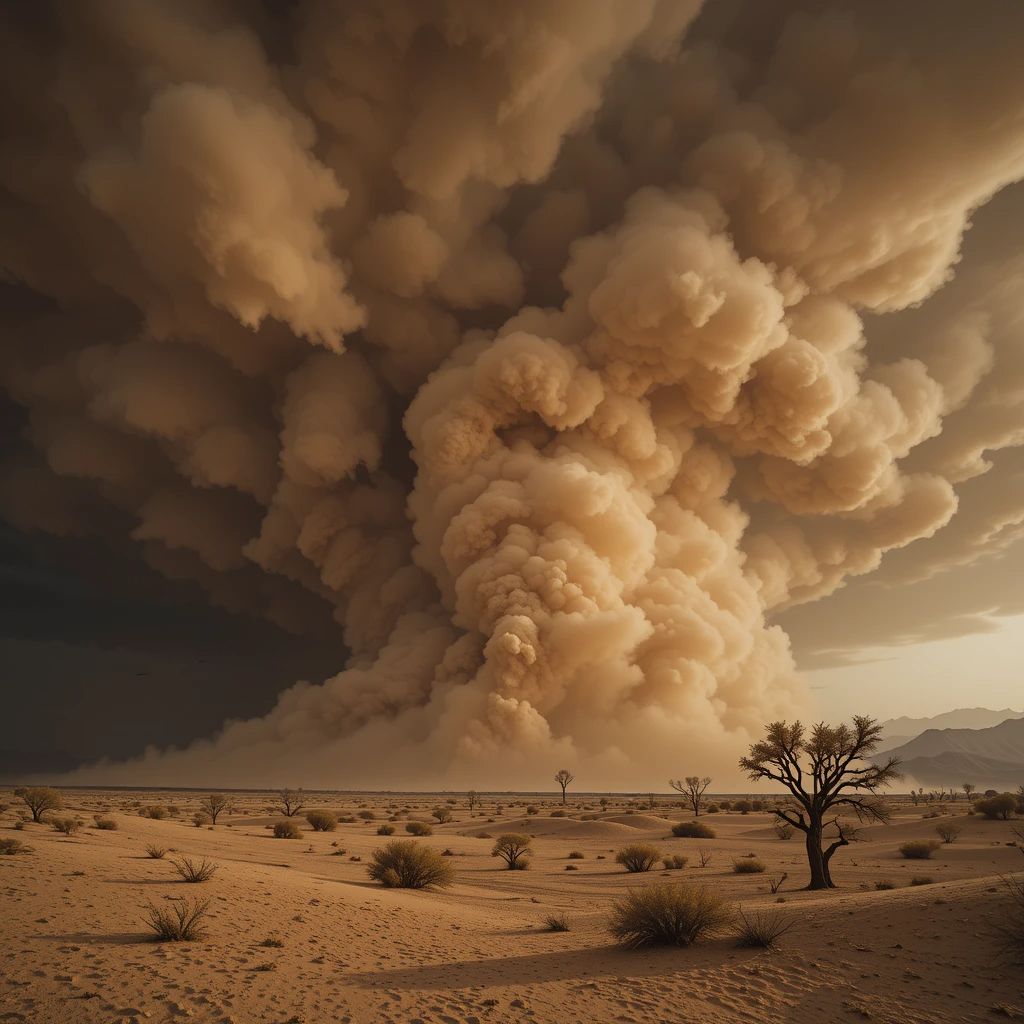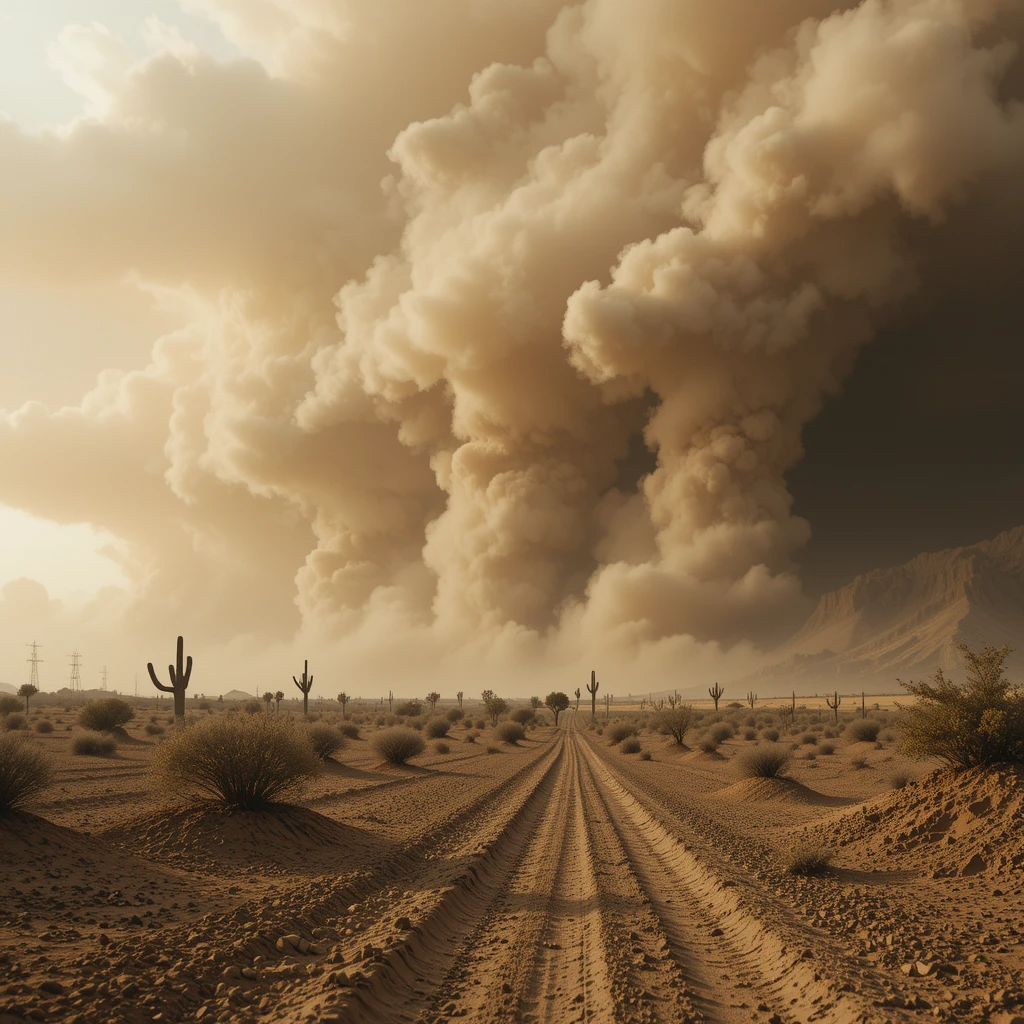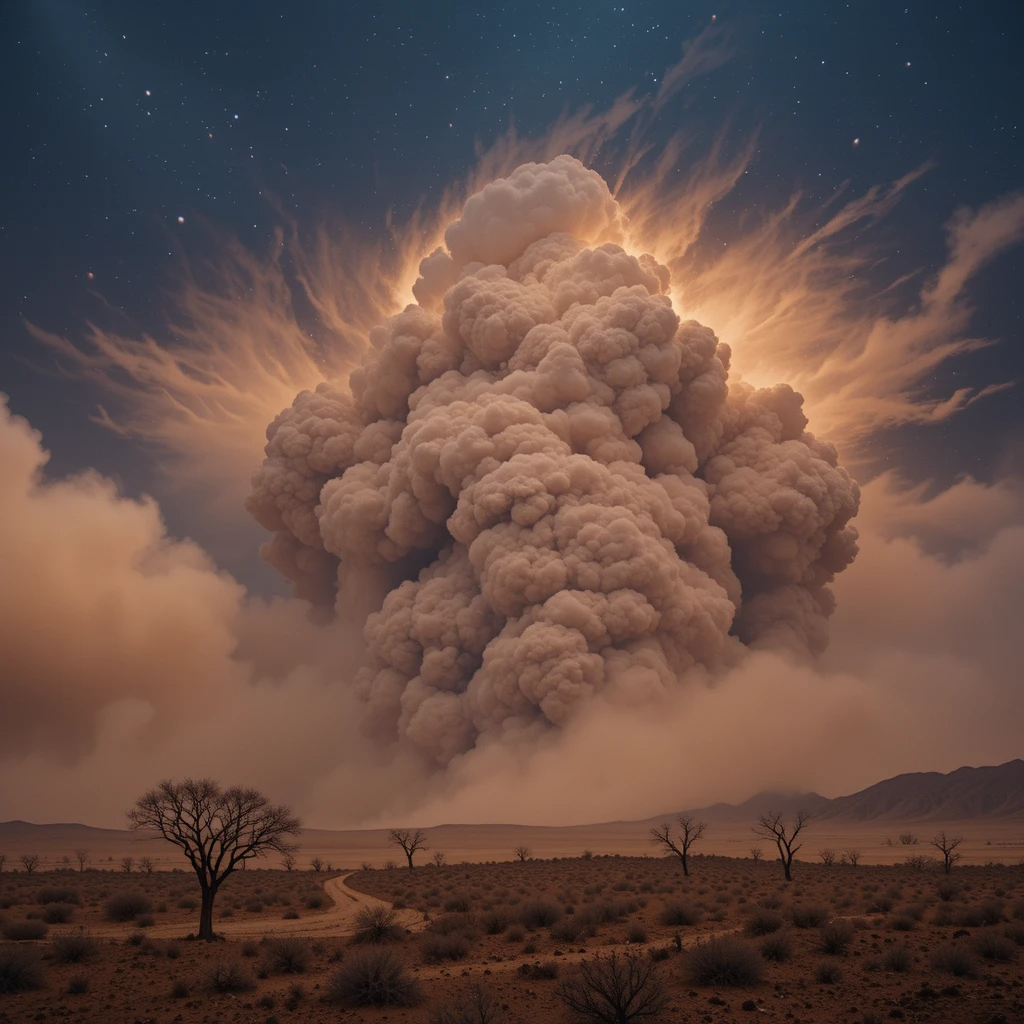Introduction
Across the arid and semi-arid regions of the world, dramatic dust storms often sweep across the landscape. These landscapes transform day into night in just a matter of minutes. One of the most fascinating and sometimes frightening forms of these storms is known as a haboob. The word itself originates from the Arabic term “habb,” meaning “to blow,” and it perfectly captures the violent and forceful nature of this phenomenon. Haboobs are often associated with the deserts of North Africa and the Middle East. That’s why they are also experienced in parts of the United States, particularly in the Southwest. These events are not only visually striking but also carry significant environmental, health, and safety impacts.

What Is a Haboob?
A haboob is an intense dust storm carried on powerful winds, usually associated with the outflow of a collapsing thunderstorm. As the rain-cooled air rushes downward at the surface of Earth it gathers sand and dust particles together and create a massive tower of storm. This horrifying storm engulf everything that comes in its path.
Haboob is not like an ordinary storm because of its sudden onset and dramatic scale. In just a few minutes clear sky turns into a dense and choking cloud of dust. These storms may last from 10 minutes to an hour leading to severe and drastic devastation.
Causes of Haboobs
Haboobs are said to be related with thunderstorms that can also occur without rain ever reaching to ground. The process of this storm follows these steps:
Thunderstorm Formation – Hot surface temperatures cause air to rise, forming towering cumulonimbus clouds.
Downdraft Development – Rain or hail cools the air inside the cloud, making it heavier.
Outflow Winds – This heavy, cool air rushes downward and spreads outward when it hits the ground.
Dust Uplift – In dry, sandy, or barren regions, the force of these winds lifts massive amounts of dust and sand particles into the air, creating the haboob.
The regions with dry soil, sparse vegetation, and frequent thunderstorms including Sudan, Saudi Arabia, and Arizona are mostly prone to haboobs.
Environmental Impact
The environmental effects of haboobs can be both immediate and long-lasting.
- Soil Erosion: The strong winds strip topsoil from agricultural fields, reducing fertility.
- Dust Deposition: Dust carried by haboobs can travel hundreds of miles, settling far from its origin and altering ecosystems.
- Climate Influence: Suspended dust particles affect atmospheric conditions by blocking sunlight and influencing temperature patterns.
Human activities such as deforestation, overgrazing, and urban development can worsen haboobs severity by leaving soil more exposed to wind erosion.

Health Hazards
These storms lead to severe conditions of human health. The dust particles contain not only soil particles but also allergens, bacteria, fungi, and pollutants. Prolonged or repeated exposure can lead to:
Allergic Reactions: People with allergies may experience heightened symptoms.
Respiratory Problems: Conditions like asthma, bronchitis, and silicosis can be triggered or worsened.
Eye Irritation: Dust particles cause redness, tearing, and infections.
Medical experts strongly advise wearing masks or covering the nose and mouth during a haboob, and staying indoors until the dust settles.
Safety Concerns
For travelers, especially drivers, haboobs are particularly dangerous. Visibility can drop to near zero within seconds, leading to massive traffic accidents. Aviation is also heavily affected, as dust reduces visibility for pilots and clogs aircraft engines. Power outages are common when dust particles interfere with electrical systems.
Authorities often issue dust storm warnings when conditions are ripe for a haboob. Drivers are advised to pull off the road, turn off lights to avoid being rear-ended, and wait until the storm passes. http://National Weather Service – Dust Storm Safety
Historical and Memorable Haboobs
Several notable haboobs have left their mark on history:
- Sudan, 1970s–1980s: Haboobs during drought years worsened famine conditions by devastating crops.
- Phoenix, Arizona (July 2011): A massive haboob, nearly 100 miles wide and 10,000 feet high, swept through the city, creating one of the most photographed dust storms in U.S. history.
- Middle East Conflicts: Military operations in Iraq and Kuwait have been disrupted multiple times by haboobs, grounding aircraft and limiting visibility.
Conclusion
Haboobs are among the most awe-inspiring natural events in desert climates, reminding us of both the power and fragility of nature. While they bring a sense of wonder with their towering walls of dust, they also pose serious risks to health, safety, and the environment. Understanding their causes, impacts, and safety measures allows communities to be better prepared when these dust storms strike.

